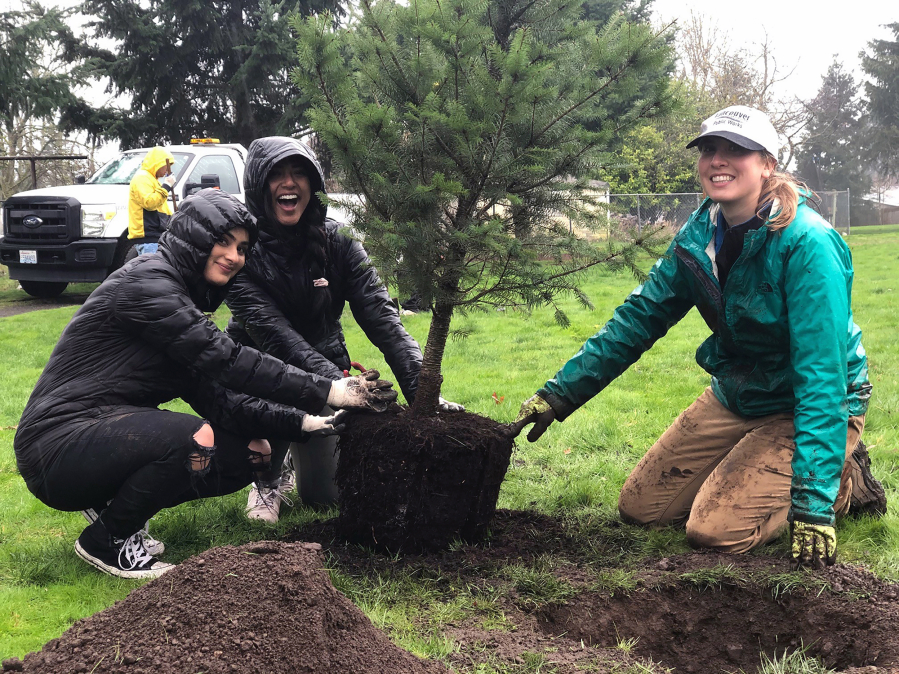Vancouver added 1,490 new arboreal additions to its tree canopy in 2020, surpassing its original goal of planting one thousand trees last year despite challenges posed by COVID-19.
Across both public and private land, volunteers and city staff planted nearly 1,500 large-caliper trees, or trees with a stem diameter of more than 2 inches.
The first major public planting project kicked off on Martin Luther King Jr. Day, with 20 new trees planted by neighbors at Homestead park in east Vancouver. The last tree-planting event took place in Arnada, with 19 new street trees planted along the neighborhood’s roads.
“As we start this new year, we are renewing our commitment to planting trees across Vancouver,” Charles Ray, the city’s urban forester, said in a media release announcing the accomplishment.
“Projects planned for 2021 include planting at parks, city facilities, schools, businesses and in neighborhoods. With the help of community volunteers and private property owners, we hope to surpass 2020 results.”
Vancouver had previously made its pledge to plant a thousand trees last year as part of the Trees in Cities Challenge, a global urban forestry program launched by the United Nations Economic Commission for Europe. Initially launched in September 2019, mayors of the cities participating in the program make a formal pledge to plant a certain number of trees (the most recent global pledge count clocks 8.56 million new urban trees).
Planting trees in densely populated areas has more than one benefit. Cities are major producers of carbon dioxide, and adding to their tree canopy helps offset that impact to the environment. From a public works perspective, the root system created by an abundance of trees is also a useful tool in managing the flow of stormwater.
And while maintaining a forest habitat certainly benefits the wildlife and biodiversity of an area, it’s good for the humans, too. Studies show that simply the presence of trees benefits mental and physical well being — proximity and quantity of a tree canopy are used as factors to predict public health outcomes and cost.
According to Jessica George, Vancouver’s urban forestry outreach coordinator, the next major public planting event will be held on Feb. 27 in recognition of Black History Month and in coordination with Vancouver Parks and Recreation and the Urban Youth Program.
To learn more, visit the city’s urban forestry website at cityofvancouver.us/publicworks/page/urban-forestry.
Community events uprooted
When COVID-19 hit nearly a year ago, most community-oriented activities moved online. The tree-planting initiative, for obvious reasons, wasn’t one of them. You can’t dig a hole over Zoom.
For much of the year, in-person volunteer and neighborhood planting events were suspended. To surpass the thousand-tree quota last year, the city relied heavily on private property owners. Across public land — parks, natural areas, roadway medians and the Westside Wastewater Treatment Facility — staff, contractors and AmeriCorps members took up the mantle.
Community planting events resumed late in the year as public health guidance evolved, with masking and social distancing regulations in place.




